We occasionally link to goods offered by vendors to help the reader find relevant products. Some of these may be affiliate based, meaning we earn small commissions (at no additional cost to you) if items are purchased. Here is more about what we do.
Ding Dongs, Ho Hos, Suzy Q’s, CupCakes – I know my prepackaged chocolate cakes like I know my ABC’s!
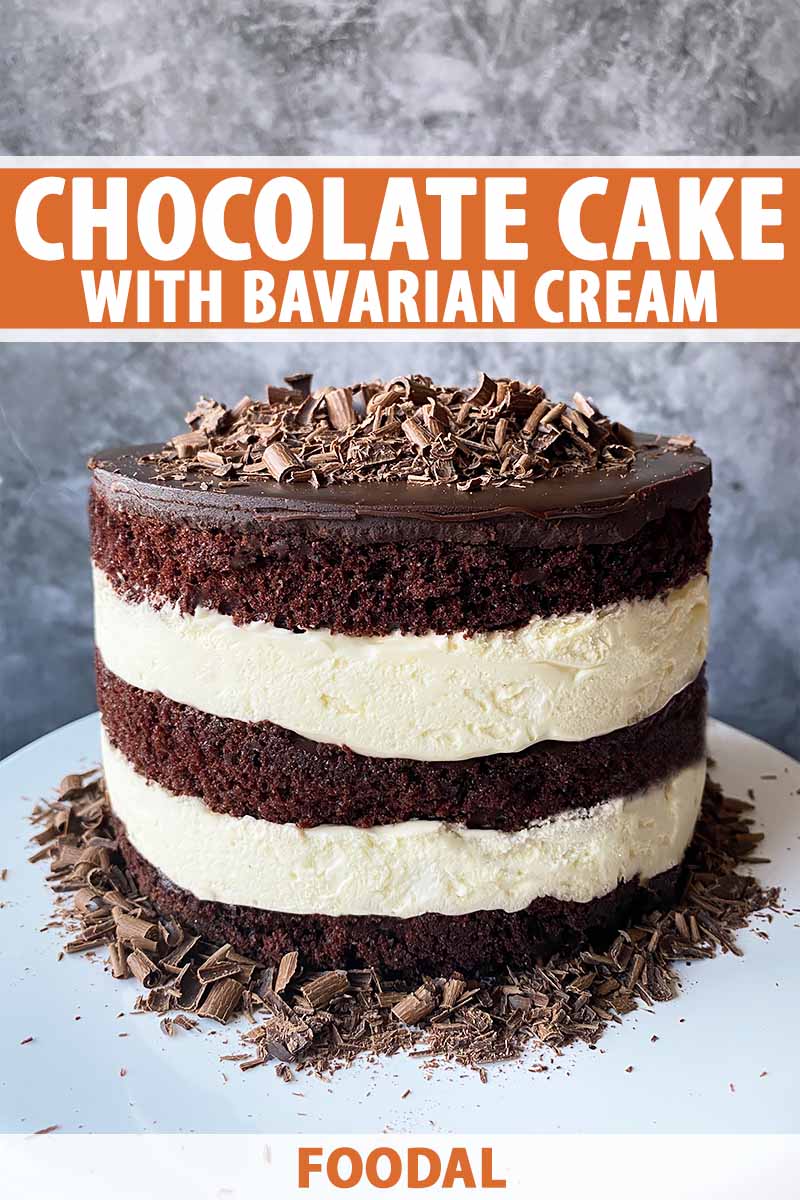
I might even know them better than my ABC’s.
“L, M, N, O… Pastry?”
My infatuation with desserts started early. Very early. Like, in-the-womb early.
My mom loves telling the story of how she would often develop voracious cravings for Hostess and Tastykake products when she was pregnant with me.
And all that sugar my mom consumed has since fueled every step of my life so far. Throughout these last three delicious decades, I’ve eaten innumerable globules of cookie dough, had a weird obsession with the game Candy Land, pursued an education in gastronomy, and made a career as a baker and pastry cook.
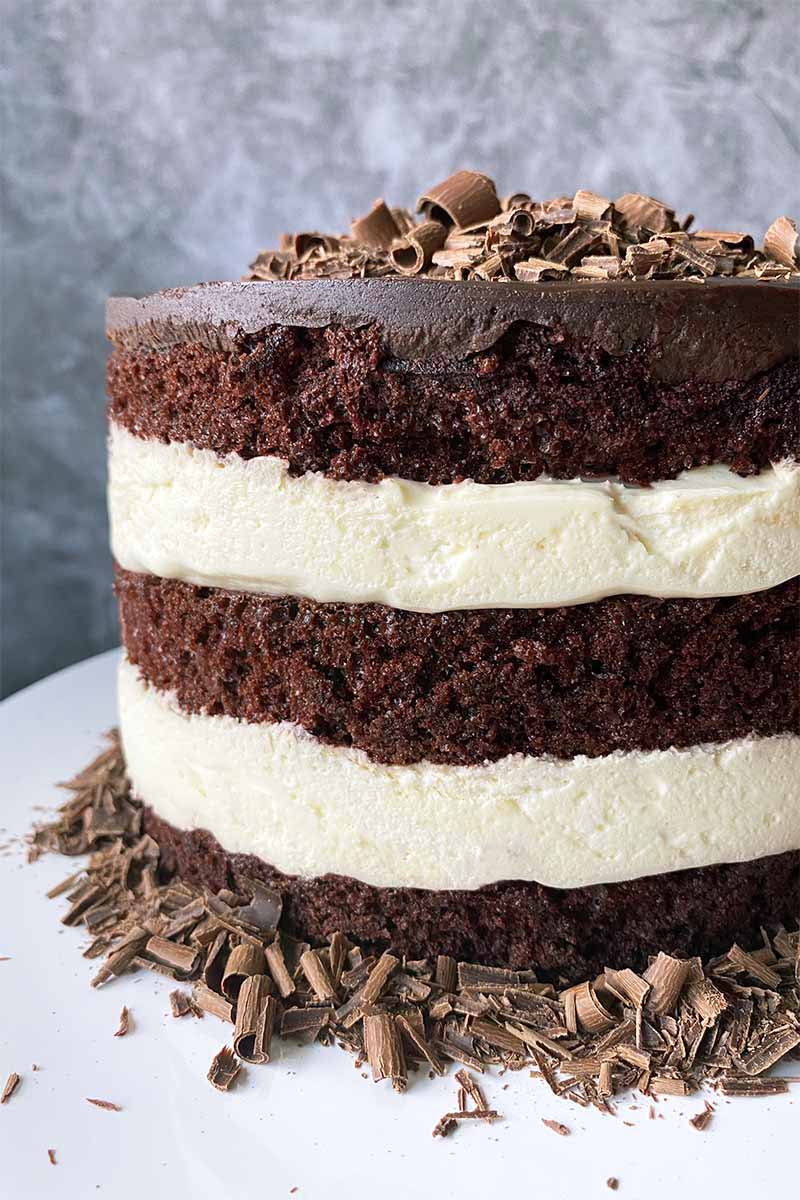
And look at her sweet baby girl now: writing articles and developing recipes on all things sugary and lovely, to share with the world!
So is it really a surprise that I wanted to make my own homemade recipe for my favorite (and my mom’s favorite) convenience food product?
My version is a six-inch-round dessert, with exposed sides and alternating layers of moist cake with a rich chocolate flavor and vanilla Bavarian cream.
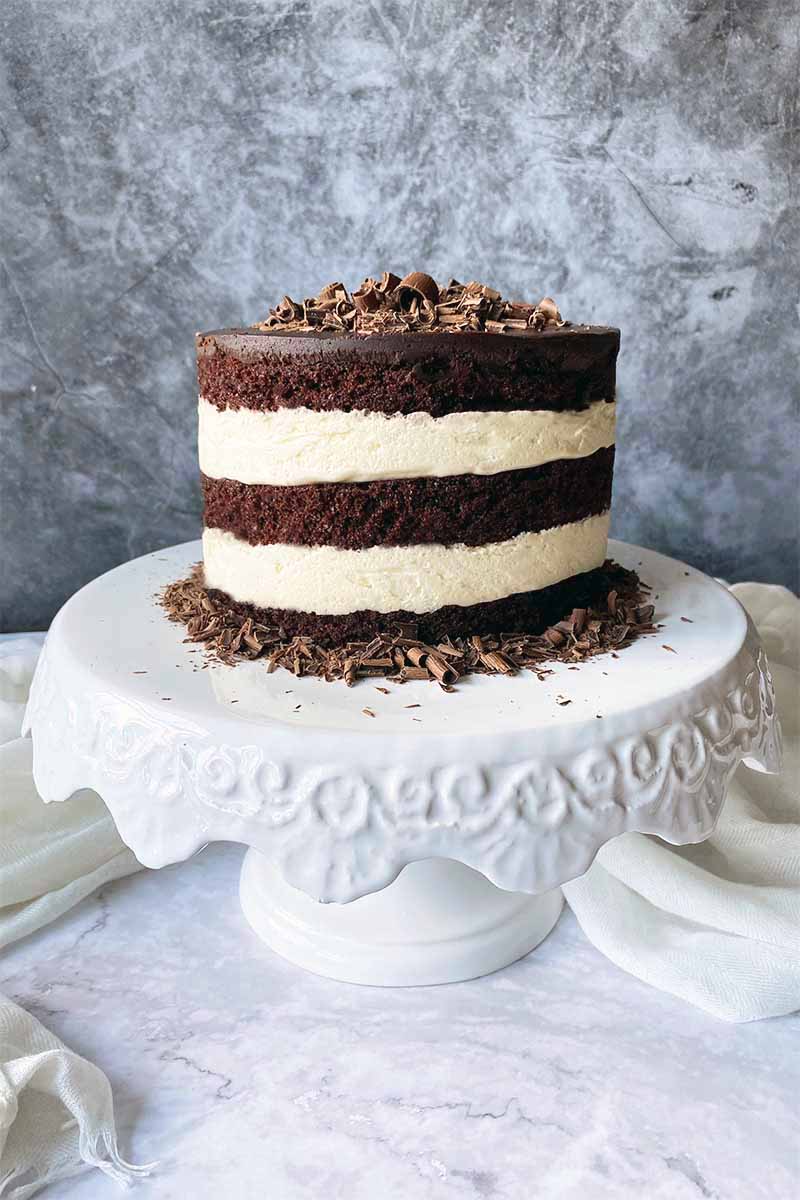
Topped with a sinfully thick layer of ganache, this dessert is a wicked indulgence with a one-of-a-kind look.
Bavarian cream is an airy custard stabilized with both gelatin and freshly whipped cream. When chilled and set, it maintains its shape while staying very light and creamy. According to one of my friends, it tastes like a super soft marshmallow, with its characteristic soft and spongy texture.
When making a cake with exposed sides, especially with Bavarian cream, I prefer using two essential decorating tools: a metal cake ring and pliable acetate cake collars.
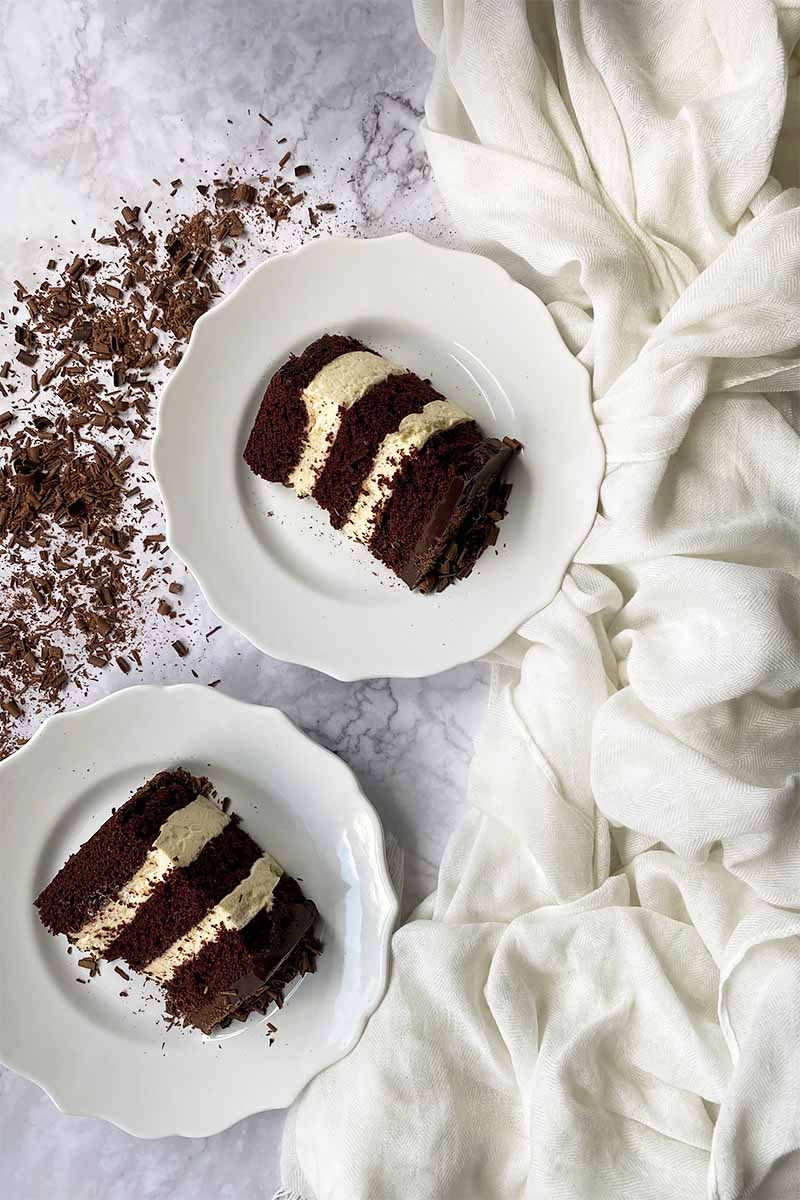
The metal ring is necessary to build the layers in an organized unit, and to keep the Bavarian cream contained so it sets completely without messily spilling out everywhere while it is still in a semi-liquid state.
The acetate collars act as a nonstick layer between the cake and the ring, and as a protective barrier to keep the cake moist once the ring is removed. You can find the acetate cake collars I use on Amazon.
And seeing all of those exposed layers – it’s so fun and different! You may have seen this decorating style in the cool cakes at Momofuku Milk Bar, a popular bakery known for its bold spins on all-American desserts.
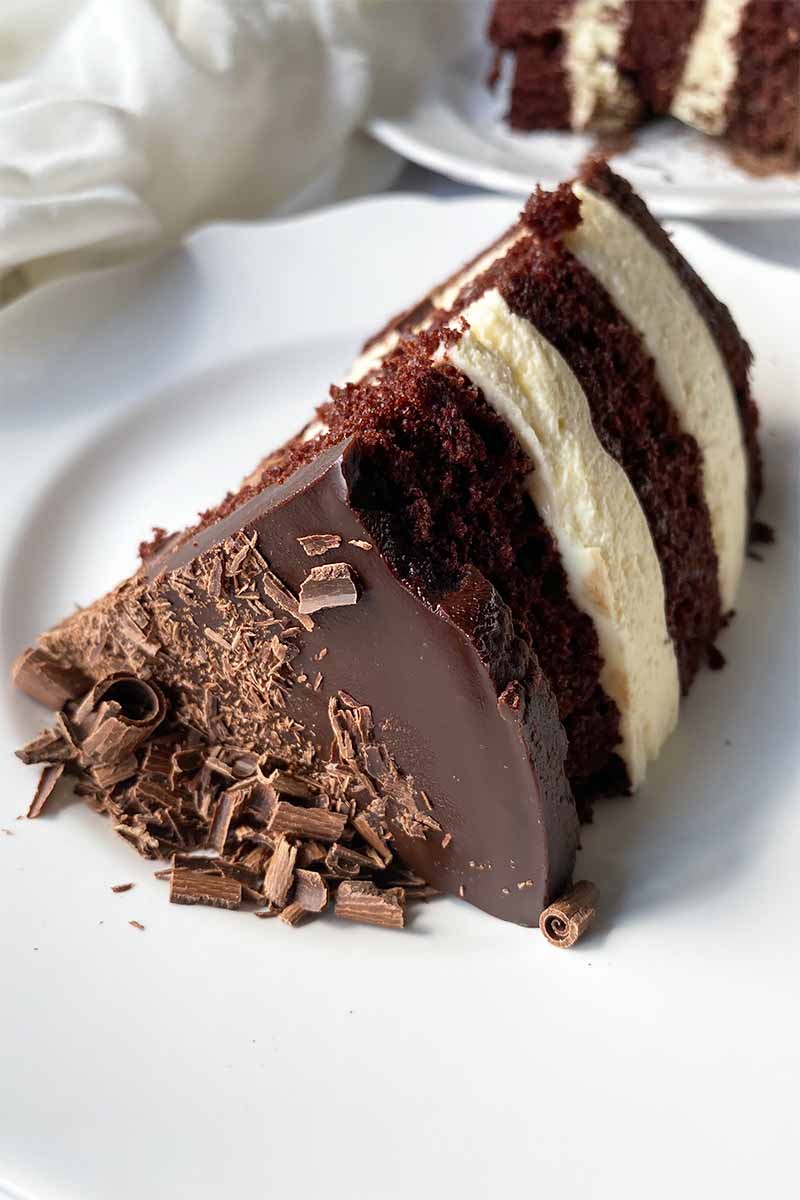
Interested in this technique? Make sure you read our Cooking by the Numbers section below for a more detailed explanation. This dessert definitely requires a longer, more strenuous process to make each layer from scratch and to assemble them, but you’ll be so proud of the beautiful and insanely delicious end results!
If you ask me, this dessert is perfect for any pregnant woman with a massive chocolate craving.
Print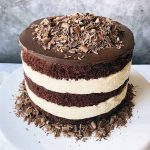
Chocolate Cake with Bavarian Cream Filling
- Total Time: 3 hours, 40 minutes
- Yield: 1 6-inch cake (8 servings) 1x
Description
With rich chocolate cake, sweet Bavarian cream, and a silky ganache topping, you’ll love every layer of this sublime homemade dessert.
Ingredients
For the Cake and Assembly Materials:
- 1 recipe Foodal’s Best Chocolate Cake
- 2 8-inch-long strips acetate cake collars
- 1 6-inch metal cake ring
For the Bavarian Cream Filling:
- 1/3 cup cold water
- 2 teaspoons powdered gelatin
- 3 egg yolks
- 1/3 cup granulated sugar
- 1 cup whole milk
- 1/2 teaspoon vanilla extract
- 1 cup heavy whipping cream
For the Ganache:
- 1/2 recipe Foodal’s Chocolate Ganache
Instructions
For the Cake and Assembly Prep:
- Preheat the oven to 350°F. Line a half baking sheet with a silicone mat or parchment paper. Lightly coat the sides of the pan with cooking oil spray.
- Follow the recipe to make the cake batter, and spread it into the prepared baking sheet. Bake for 12-15 minutes, or until the cake is springy and a toothpick inserted into the center comes out clean.
- Cool completely in the pan. Carefully cut out 3 or 4 6-inch rounds, depending on how tall you want the cake to be. Save any extra scraps for a future use. Cover the rounds, and set aside them aside while you make the cream.
- Prep the cake ring before making the Bavarian cream. Place a piece of parchment paper that is slightly larger than the size of the cake ring on a plate or tray. Place the cake ring on top of the parchment paper. Line the interior of the cake ring with one strip of the acetate. Set aside.
For the Bavarian Cream:
- Place 1/3 cup cold water in a small microwave-safe bowl. Evenly sprinkle the gelatin on top. Set aside to bloom as you prepare the custard.
- Create a double boiler by first filling a medium saucepan about a 1/4 of the way full with water. Gently simmer the water without boiling. Leave the water simmering as you prepare the other ingredients.
- Using a heatproof metal bowl that fits on top of the saucepan, whip the egg yolks and sugar off the heat with a whisk until thick and light yellow in color. In a separate small saucepan, scald the milk. Slowly pour the warm milk and vanilla into the egg yolk mixture, whisking constantly.
- Place bowl that contains the milk and egg mixture on top of the lightly simmering pot of water. Gently cook, stirring continually with a rubber spatula until it thickens slightly, about 10-12 minutes. It should thicken enough that it coats the back of the spatula without quickly dripping off. Immediately remove from the heat, and pour the mixture through a strainer into a clean bowl to remove any cooked egg pieces.
- When the custard is strained, gently melt the bloomed gelatin by heating it in the microwave for just a few seconds, until liquid. Stir the gelatin mixture into the hot custard mixture.
- Cool the custard in the refrigerator uncovered, stirring occasionally. Chill until it is just beginning to set but is still very soft, about 30-40 minutes.
- While the custard is cooling, prepare the whipped cream by whisking the cold heavy cream until soft peaks form. As soon as the custard is ready, gently fold in the whipped cream until it is completely incorporated.
To Assemble:
- Working quickly, place one chocolate cake disc on the bottom of the prepared cake ring. If using three cake rounds, you’ll have two layers of Bavarian cream. Divide the Bavarian cream into two equal amounts, and evenly spread the first amount of cream on top of the cake round. Alternate with another cake round, then the other amount of cream, then top with the last cake round.
- If using four cake rounds, you’ll have three layers of Bavarian cream. Divide the Bavarian cream into three equal amounts, and evenly spread one third of the cream on top of the first cake layer. Continue alternating between cake and the other amounts of the cream, starting and ending with a cake disc.
- If the cake is beginning to reach heights that go beyond the first layer of acetate, gently slide the second acetate collar between the first acetate layer and the cake ring to extend the border.
- Follow the recipe to make the ganache. Pour over the top of the cake, smoothing out the top.
- Immediately place the cake in the refrigerator uncovered to chill and set completely, for at least 2 hours.
- When ready to serve, carefully lift off the cake ring, then remove the acetate. Slice, serve, and enjoy!
- Prep Time: 1 hour
- Cook Time: 40 minutes
- Category: Cake
- Method: Baking/Stovetop
- Cuisine: Dessert
Keywords: chocolate cake, Bavarian cream, ganache
Cooking by the Numbers…
Step 1 – Bake Cake
Prep a half baking sheet by lining it with parchment paper or a silicone mat. Lightly grease the sides with cooking spray.
Follow the instructions for Foodal’s Best Chocolate Cake Recipe. When the batter is made, pour it into the prepared baking sheet.
The batter will be slightly thin, but it will definitely cover the entire baking sheet.

Bake for 12-15 minutes, or until the cake is springy and a toothpick inserted into the center comes out clean.
Cool completely in the pan. Carefully cut out 3 or 4 6-inch rounds, depending on how many layers you want.
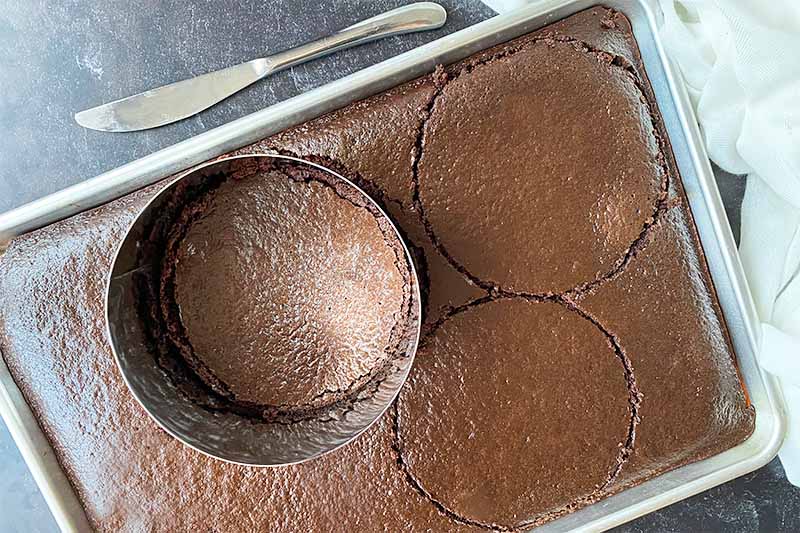
Save any extra cake scraps for a future use (cake pops, please!). Cover the cake rounds, and set them aside while you make the cream filling.
Looking for a slightly healthier alternative? Use our recipe for whole wheat chocolate cake instead.
Step 2 – Prep Ring
Place a piece of parchment paper that is slightly larger than the size of the cake ring on a plate or tray. Place the cake ring on top of the parchment. Line the interior of the cake ring with one sheet of acetate.
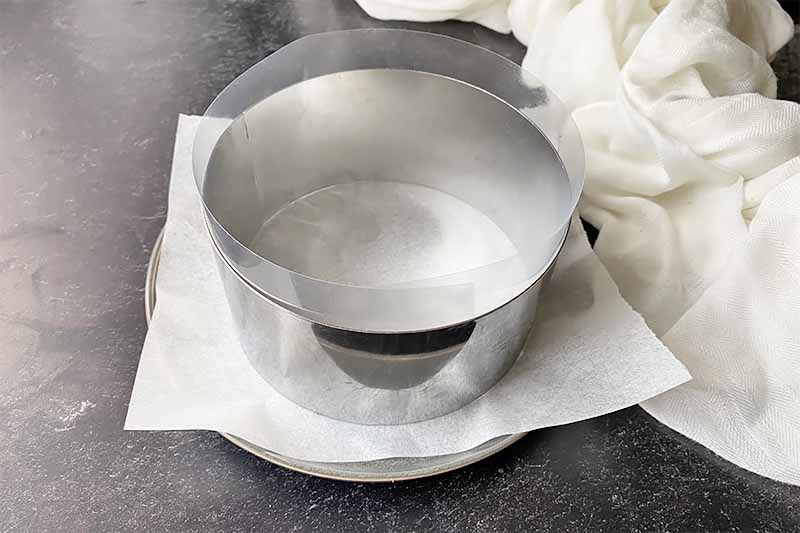
Keep another layer of acetate ready to go, in case the layers extend beyond the height of the acetate in the ring.
Step 3 – Bloom Gelatin and Make the Custard
Making the Bavarian cream will be the most strenuous part of this recipe, but it yields a tasty end result! This involves the following: blooming the gelatin, making a custard, adding the bloomed gelatin to the custard, letting that cool, and then folding in freshly whipped cream.
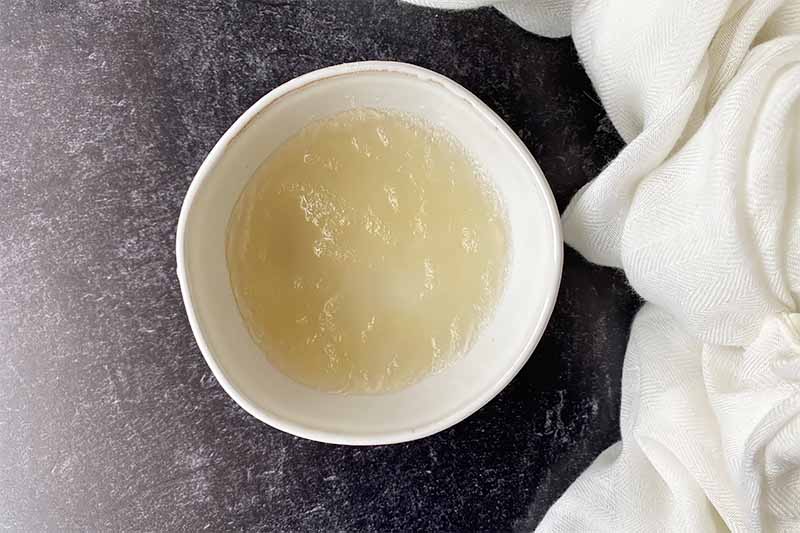
First, start with blooming the gelatin. Place the cold water that you measured out in a small heatproof bowl. Evenly sprinkle the gelatin on top, and set it aside to bloom. The amount of time that you need to make the custard is also the perfect amount of time to allow the gelatin to bloom properly.
Make a double boiler by gently simmering some water in a medium-sized saucepan, without boiling. Keep the water simmering while you prepare the other ingredients.

Using a heatproof metal bowl that fits on top of the double boiler pan (make sure it doesn’t touch the water!), whip the egg yolks and sugar off heat with a whisk until thick and light yellow in color.
In a separate small saucepan, scald the milk. Slowly pour the warm milk and vanilla into the egg yolk mixture, whisking constantly.
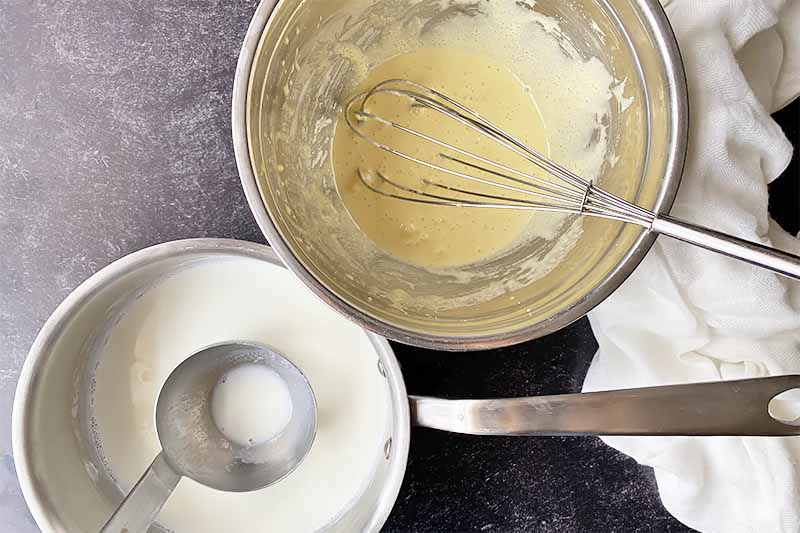
Immediately place the milk and egg mixture on top of the lightly simmering pot of water. Switch to a heatproof spatula and gently cook, stirring continually until it thickens. It should thicken enough that it coats the back of the spatula without excessive dripping. This will take about 10-12 minutes.
There are three important factors here when cooking: You must control the steam, you must stir continually, and you must use a spatula.

With an egg base, this mixture is incredibly delicate when cooked over heat, even when that heat is just create by the steam rising from a double boiler. Be sure the water remains at a gentle simmer and doesn’t touch the bottom of the bowl.
Stirring continually will ensure the egg cooks evenly. Using a spatula – rather than a whisk – will create a homogenized mixture without excessive air development and froth.
Immediately remove from the heat, and pour the mixture through a strainer into a clean bowl to remove any small cooked egg pieces – you’ll get just a few tiny pieces, and it shouldn’t be a lot.
Step 4 – Add the Gelatin and Cool
After straining the custard, gently melt the bloomed gelatin by heating it in the microwave for just a few seconds until it is liquid. Stir the gelatin mixture into the hot custard mixture.
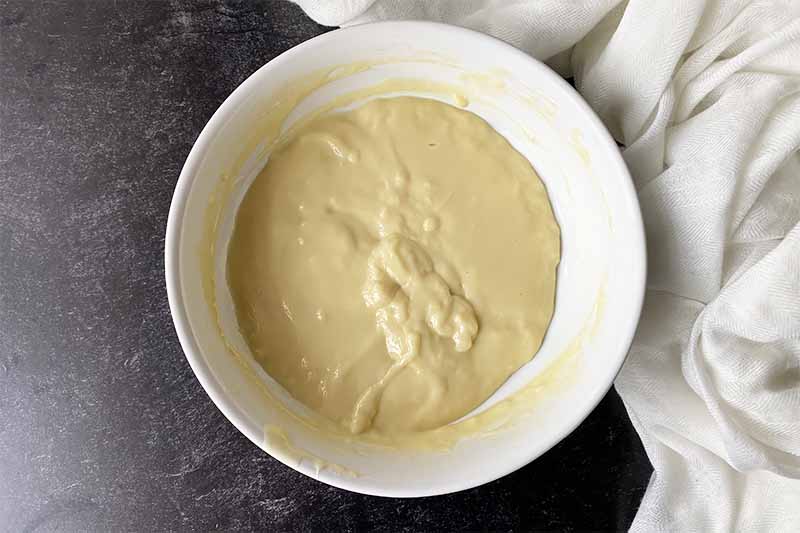
Cool the custard in the refrigerator, stirring occasionally, until it is still fairly soft and just beginning to set. It should not be firm. This will take about 30 to 40 minutes.
Pay very close attention to how long the custard cools! You don’t want it to solidify, or else the whipped cream cannot be folded in properly.
Step 5 – Make the Whipped Cream
While the custard is cooling, make whipped cream by whisking the cold heavy cream by hand, with a hand mixer, or with a stand mixer fitted with a whisk attachment until soft peaks form.
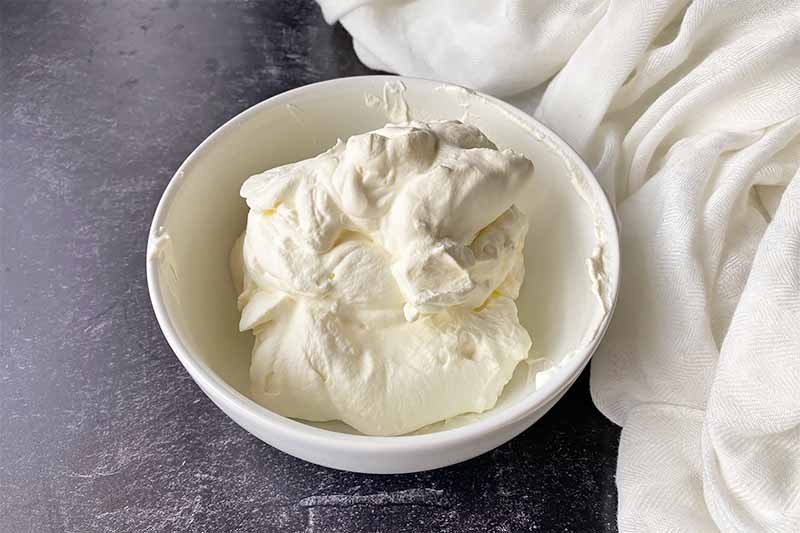
Don’t overwhip! You want a softer mixture so that it is easier to fold into the chilled custard base. If it’s too firm, it will not easily combine with the custard, and will leave behind large portions of unincorporated whipped cream.
Step 6 – Combine Custard and Whipped Cream
Gently fold the whipped cream into the custard, until incorporated. There should not be any large masses of whipped cream remaining throughout the custard base.
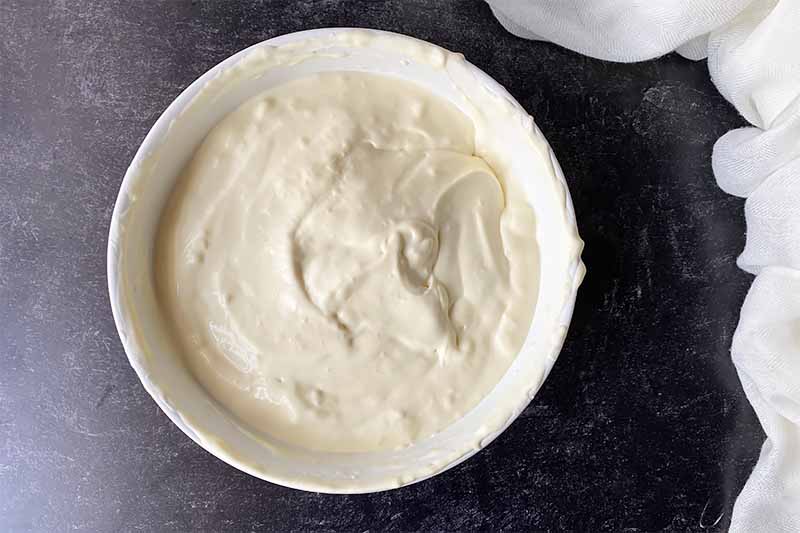
That’s it! You did it! Now, to assemble…
Step 7 – Assemble
Working quickly, place a cake round on the bottom of the prepared cake ring.
If using three cake rounds, you’ll have two layers of Bavarian cream. Divide the Bavarian cream into two equal amounts, and evenly spread half of the cream on top of the cake round. Continue alternating between cake and the remaining cream, starting and ending with a cake disc.
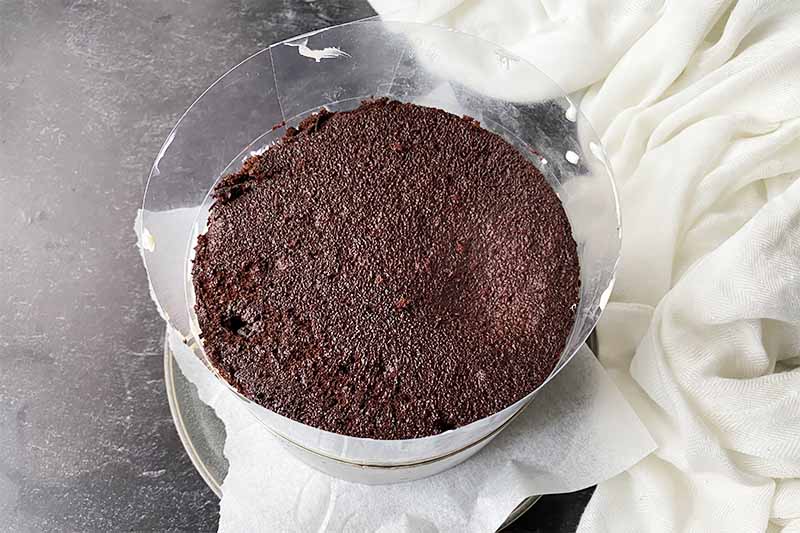
If using four cake rounds, you’ll have three layers of Bavarian cream. Divide the Bavarian cream into three equal amounts, and evenly spread one third of the cream on top of the cake layer. Continue alternating between cake and the other amounts of the cream, starting and ending with a cake disc.
Because the Bavarian cream is made with gelatin, you’ll need to work quickly to spread the cream before it sets too firmly.
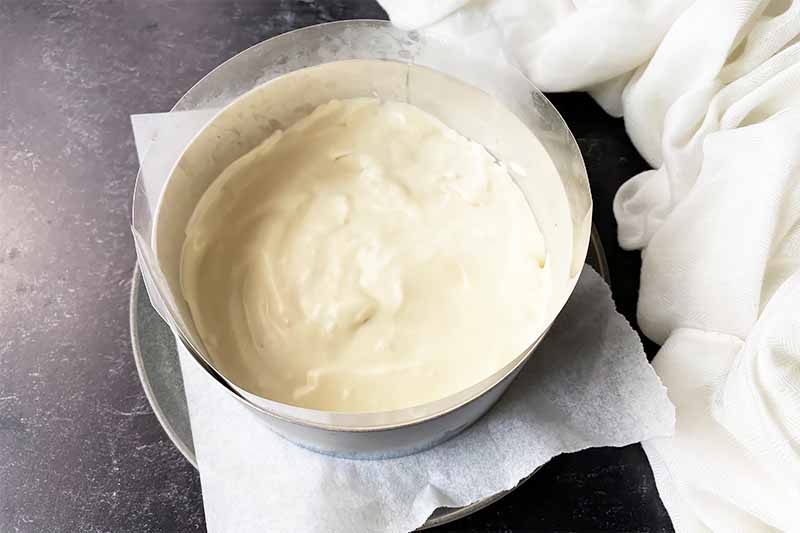
If the cake is starting to rise beyond the first layer of acetate, gently slide the second acetate collar between the first acetate collar and the cake ring to extend the border.
Step 8 – Top with Ganache
Follow our recipe to make half a batch of Chocolate Ganache. Pour over the top of the cake, smoothing and spreading it out to cover the entire surface.
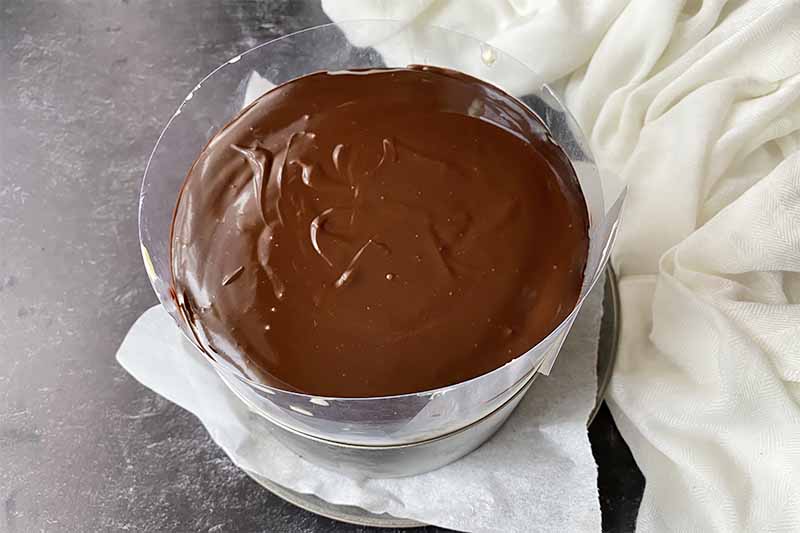
Step 9 – Chill and Serve
Immediately place the cake in the refrigerator uncovered to chill and set completely, for at least 2 hours.
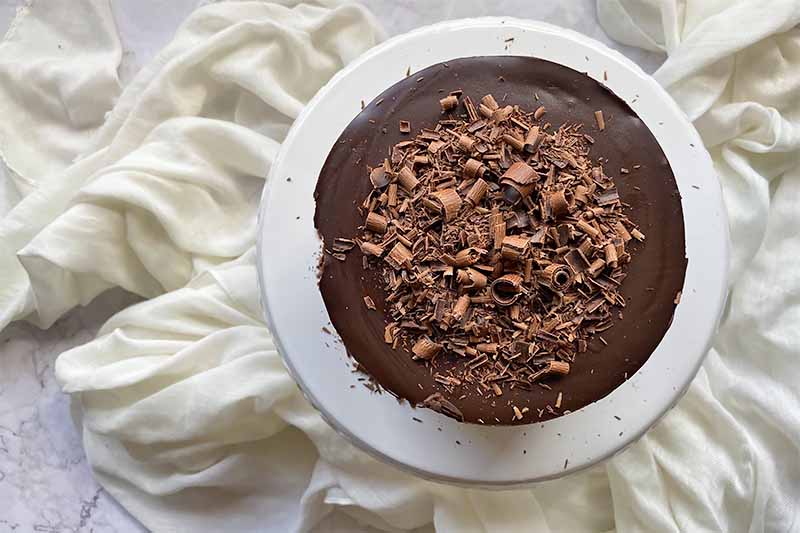
When you are ready to serve, carefully lift off the cake ring, then remove the acetate. Slice with a sharp knife, serve, and enjoy!
For an extra touch of flair, you can choose to garnish the top with some chocolate shavings, or any of your favorite decorations like sprinkles or fresh fruit.
Do I Have to Make Bavarian Cream for the Filling?
Looking for something that’s a little less complicated to prepare? Are you craving frosting?
Though Bavarian cream is a classic recipe that’s wonderful to know as a home baker, you certainly don’t have to use it for the filling if you can’t dedicate all the time and effort required to make it this time.
That is, as long as you promise me you’ll try it eventually!
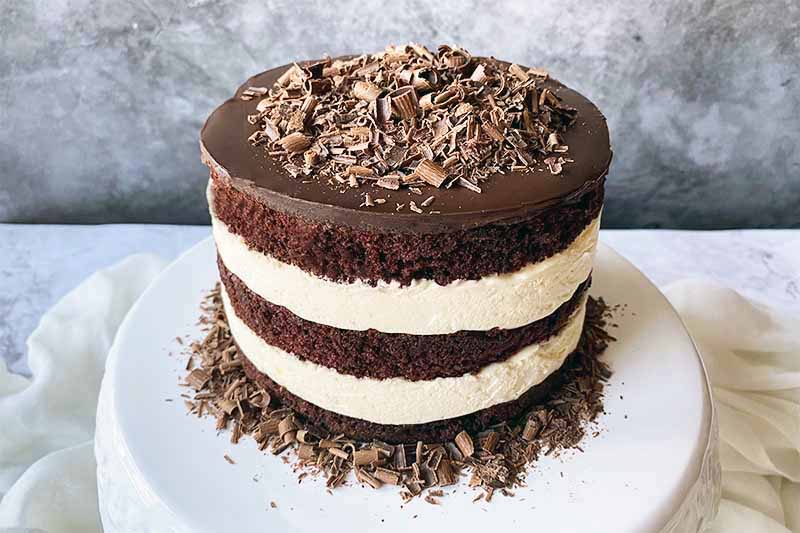
Let those exposed cake edges serve as a display for any of your favorite frosting recipes. Here are some ideas to use if you want to make something just a little easier that will be just as tasty between the layers of cake:
You can choose to use the cake ring method for decorating, or go for something more traditional with frosted sides. My guide to basic cake decorating and my review of the best cake decorating tools will help you, no matter what you decide.
But, let’s be honest… sometimes, you just don’t feel like decorating at all. For those kind of nights, just stick with my microwave mug cake. We can save the decorating for later!
Had you ever heard of Bavarian cream before? What do you think of the exposed sides on this confection? I would love to know if you’ll try this cool decorating style for your next dessert! Leave me a message in the comment section below.
Are you all about those layers? Here are even more cakes with bountiful, beautiful layers to try next:
Photos by Nikki Cervone, © Ask the Experts, LLC. ALL RIGHTS RESERVED. See our TOS for more details. Originally published by Shanna Mallon on March 27, 2009. Last updated October 6, 2020.
Nutritional information derived from a database of known generic and branded foods and ingredients and was not compiled by a registered dietitian or submitted for lab testing. It should be viewed as an approximation.
About Nikki Cervone
Nikki Cervone is an ACS Certified Cheese Professional and cheesemonger living in Pittsburgh. Nikki holds an AAS in baking/pastry from Westmoreland County Community College, a BA in Communications from Duquesne University, and an MLA in Gastronomy from Boston University. When she's not nibbling on her favorite cheeses or testing a batch of cupcakes, Nikki enjoys a healthy dose of yoga, wine, hiking, singing in the shower, and chocolate. Lots of chocolate.

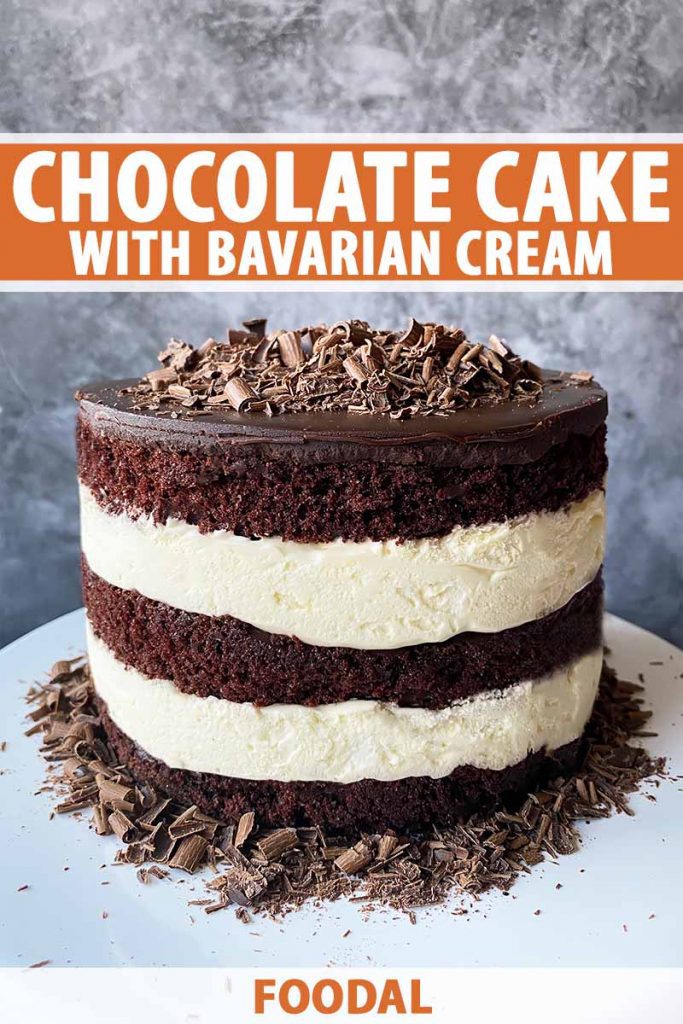
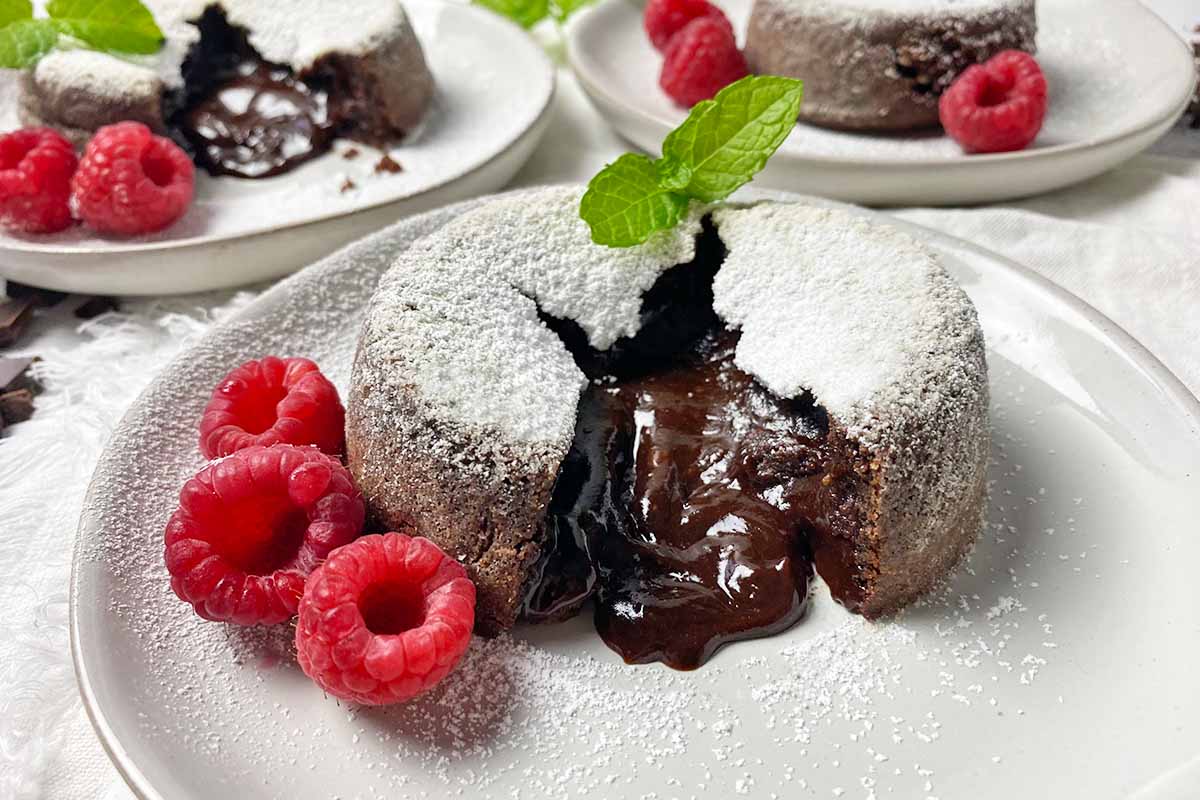
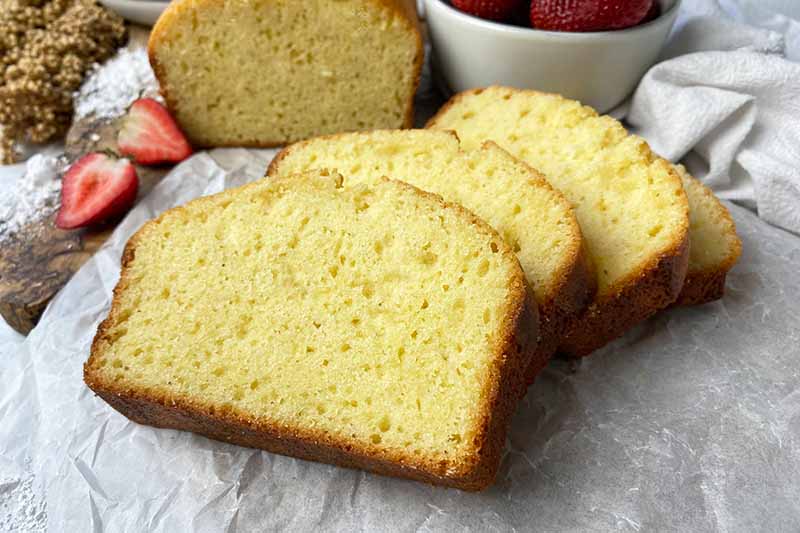
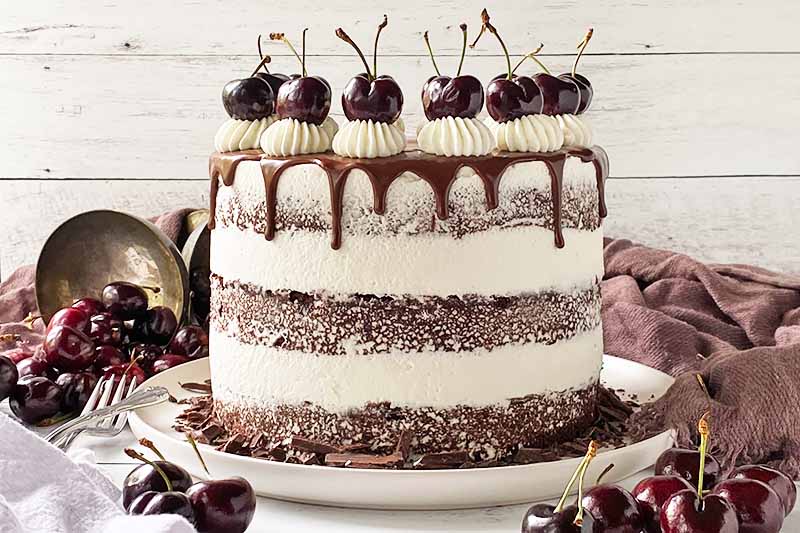
Well, I already loved cake… but this beauty just made me love it even more!
Holy cow, that looks good!
Hmm, who doesn’t like cake? That’s an oddity right there but to each his own.
OMFG I love chocolate cake and yours looks amazing. The pictures make me want to reach in and eat it.
I think ice cream cake is my favorite. Your cake does look amazing!
The chocolate cake in your close-up photo is, quite simply, impossible to say no to. Thanks for sharing this recipe!
The chocolate cake in your close-up photo is, quite simply, impossible to say no to. Thanks for sharing this recipe!
★★★
I made this yesterday and this is my favorite chocolate cake so far! Thanks for the share!
★★★★★
Chocolate and cream! Yummy!
★★★★★
I tried making the cream, was impossible and pissed me off all 3 times. Horrible recipe!!! Wasted so much eggs, butter, and sugar! It’s ridiculous.
I’m so sorry you had trouble with this recipe. Like I wrote in the intro, Bavarian Cream is a strenuous recipe to produce in both home kitchens and professional kitchens, but is so rewarding when done correctly. Talk to any pastry chef or cook (including myself), and they will tell you all their fumbles and failures, even with recipes that they have made over and over again.
There are many steps, and you have to ensure that you are following the recipe, the measurements, and the exact procedure along the way. There are many steps where an error could happen: Did you bloom the gelatin correctly? Did you thicken the mixture on the stovetop for long enough? Did you whip the heavy cream enough? Did you allow the mixture to cool properly before adding the whipped heavy cream? Did you allow the cream to set for the appropriate amount of time in the refrigerator before layering with the cake?
Stop and reflect on what you believe could have gone wrong – I hope you’ll be able to make this again with great success!
You literally forgot to add the vanilla step in the bavarian cream. The recipe isn’t organized very well. Maybe that’s why this other user had trouble.
Thanks so much for bringing this error to my attention! The recipe has been updated with the addition of vanilla in the instructions. Continue enjoying your baking adventures!
followed the directions- they were great- cake turned out beautifully!! just need to garnish!
★★★★★
Your steps were not clear. I’ve read and made tons of recipes. This one is a maze. You don’t have the weights of the ingredients by the explanation so when the time comes to add the “milk” one must refer back to the part of the recipe that lists the ingredients needed. Then jump back down to the recipe. There is no temperatures listed for what the custard should be at(which would help.) Putting the custard in the fridge is just a shortcut and can cause a lot of headache if you don’t know what to watch for. You can leave it on the counter and it does the same thing but less volatile to the gelatin. AND you state to “Immediately place the milk and egg mixture on top of the lightly simmering pot of water.” Which makes it sound like you want a double boiler type deal when in reality it needs to go from the bowl into a pot which is “simmering.” For future recipes try to be a bit more inclusive and clear. It would help save the reader/ cook a lot of wasted time,effort,money and ingredients!
Could I use coconut milk in the Bavarian cream and add shredded coconut?
Hello, Lily! The Bavarian cream relies on whipped heavy cream in the recipe for a stable structure – I wouldn’t recommend replacing the the heavy cream portion with the coconut milk. However, to experiment without taking too big of a risk, you can try to substitute the whole milk with coconut milk in equal portions.
As for the shredded coconut – that should be fine to add once the whipped cream has been folded in. Once the whipped cream is folded in, gently fold in the shredded coconut.